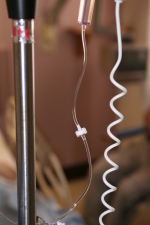Prevent Misconnections of Lines and Cables
by
Barbara Kram, Editor | April 25, 2006

The hospital environment is filled with lines and cables that connect medical devices to patients. With so many connections to be made, occasionally incorrect connections occur. Although mistakes are often caught before harm is done, uncorrected misconnections can cause patients to be severely injured, or worse. For example, a patient died due to a misconnection in which nitrous oxide was delivered instead of oxygen. Incorporating several levels of prevention strategies can help avoid harm to patients.
ECRI (www.ecri.org), an independent, nonprofit health services research agency, offers guidance on preventing misconnections of lines and cables in the March 2006 issue of its monthly journal Health Devices. The guidance article features ECRI's multilevel prevention solutions for a successful misconnection defense plan. ECRI recommends that healthcare facilities purchase devices that prevent misconnections and implement policies and work practices that address misconnection risks to minimize future harm to patients.
"Health Devices is calling attention to an issue that poses a very real threat to patient safety," says Dennis S. O'Leary, M.D., president, Joint Commission on Accreditation of Healthcare Organizations (JCAHO). "By advising health care organizations how they can 'design out' hazards to tubing connections, ECRI joins the Joint Commission in urging a systematic approach to preventing these types of errors."
ECRI suggests the most effective preventive equipment solutions are ones that physically prevent misconnections. Work practice and policy changes can provide an additional level of protection; the most important work practice controls involve tracing lines to their origin before making a connection and being aware that the apparent need for adapters or for excessive force could signal a misconnection--in such cases, clinicians should recheck the appropriateness of the connection. Finally, conducting a formal risk assessment in high priority areas, which are outlined in the article, is recommended. This should be carried out by a multidisciplinary task force in order to identify and prevent other misconnection hazards specific to an individual facility. The March 2006 issue of Health Devices also includes guidance for purchasing a decentralized medication management system.
According to Jim Keller, vice president, Health Technology Evaluation and Safety, and Stephanie Joseph, project engineer, Health Devices Group, "This valuable information can help to avoid costly, and in some cases, deadly mistakes that put patients at risk. Minimizing misconnection errors lies in engineering controls relative to design and evaluating work practices."
